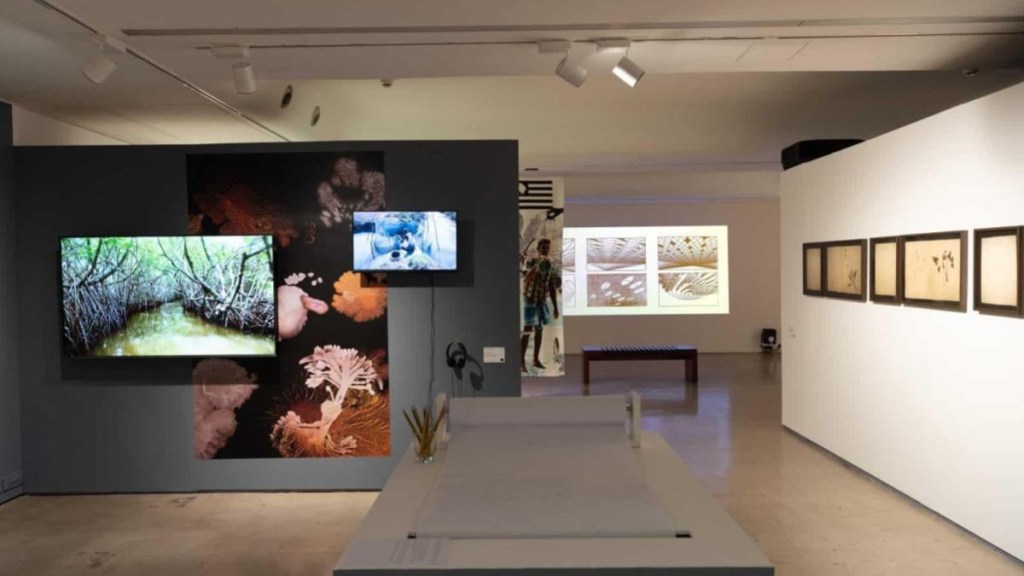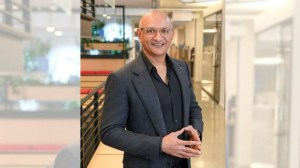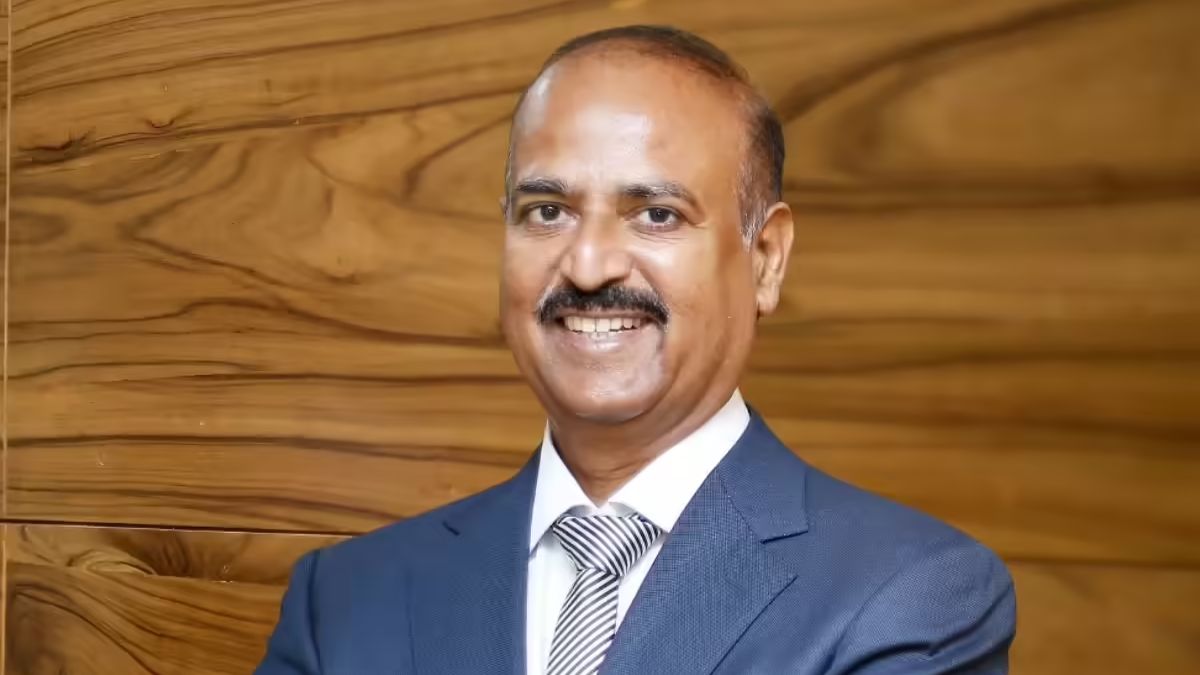Algae, mangrove, corn and fish dominate the disparate signs of life on Earth in a new travelling art exhibition that has hit the national capital. Non-human life has been the centre of work of French philosopher Bruno Latour, one of the two influential figures who inspired the show that seeks to push humans into thinking about the relationship between them and the world they inhabit.
One of the two major central themes of Critical Zones: In Search of a Common Ground, the exhibition that opened at the Goethe Institut/Max Mueller Bhavan in Delhi on February 2, is how non-human life transformed the planet, for the better in a period spanning hundreds of millions of years, before humans arrived and changed it for the worse, in one century.
The second theme is the symbiosis among living and non-living things on the Earth and how important is the relationship between the two and among the two for the survival of the planet. The exhibition underlines both themes with the help of maps, videos and installations, for example, how micro-entities like algae impact the world on a planetary scale by producing 30% of its oxygen or a certain fishing technique in India can help sustain the dying mangrove forests.
Both Latour and his fellow-curator Austrian artist Peter Weibel, who set up the show, are no more. The philosophy of Latour, who passed away in 2022, about thinking of the world as a common ground of humans and non-humans reflect the idea of the exhibition, first mounted in Germany four years ago at The ZKM Center for Art and Media, a cultural institution in the southwestern city of Karlsruhe. The exhibition, which was based on the ideas of Latour and Weibel, the late scientific and artistic director of ZKM, opened in 2020 at ZKM as Critical Zones: Observatories for Earthly Politics to red flag the ecological and environmental catastrophe facing the Earth and the collective need to confront it.
As the exhibition came to an end two years later, ZKM and Goethe Institute decided to cooperate to extend it to South Asia, one of the most populated and polluted places on earth and thus most at risk from disasters like climate crisis. Adapted for South Asia as Critical Zones: In Search of a Common Ground, the show opened in Mumbai in 2022 before travelling to Pune, Kolkata and Colombo in Sri Lanka. “The exhibition raises questions of ecological, economic and social sustainability by bringing artists, cultural activists and scientists together,” says Katharina Görig, Goethe Institute’s head of cultural programmes in South Asia.
The ‘critical zones’ mentioned in the name of the exhibition refer to the surface of the Earth that is only a few kilometres thick formed over a thousand million years by various life forms that transformed its original geology. Studying the multiple observatories installed by scientists, one of them at the Indian Institute of Science, Bengaluru, the exhibition highlights the fact that all life forms, including humans, are inside these fragile, a few kilometres’ thick surface and there is no escape. The show reiterates Latour’s theory of a ‘new climate regime’ that combines ecological crises with political and cultural history and ethics.
Delhi-based artist Sonia Mehra Chawla, one of the several artists from across the world participating in the show, saw unsustainable fishing, farming and forestry methods behind the destruction of mangroves, a diverse ecosystem and a barrier between water and land, whose life depends on its microbial communities. The Universe in Details, 2019 and Bioshield, 2022, both from Chawla’s ongoing series, Critical Membrane, show how the Muthupet mangrove forest in Thiruvarur district of Tamil Nadu was partly restored by a two-century-old traditional fishing method, which is studied today by the M S Swaminathan Research Foundation in Chennai.
Latour’s ‘new climate regime’ theory is reflected by artists like Lisbon-based artist Uriel Orlow, who has assembled a series of massive wooden boxes to map colonial trajectories—transport of plants by colonisers from one continent to another for larger cultivation—that continue today in agricultural production in his work, Soil Affinities, and Mexican artist Edith Morales, whose video installation, Raíz Aérea (Aerial Root) redraws biopiracy and colonialism in the story of Western scientists trying to patent a variety of maize cultivated by indigenous communities in her country through communal culture, which can fertilise itself by developing aerial roots that produce a gel in which bacteria live by taking nitrogen from air.
The need to reinvent the symbiotic relationship between humans and non-humans for the survival of the planet was best explained in the 1979 book, Gaia: A New Look At Life On Earth by English chemical engineer James Lovelock. Adopted from Greek goddess Gaia, the ancestral mother of all life in the universe, Lovelock’s concept developed in collaboration with American evolutionary biologist Lynn Margulis, is recast in art at the exhibition to explain how life-forms have created the habitability condition for other life-forms and humans should learn how to prolong or improve these habitability conditions, not destroy them.
“Responding to the location in New Delhi, the exhibition is built up in layers. We start on the thin surface outside to observe, to recalibrate our senses, to get sensitive. And then we transit inside the Critical Zone and encounter a plurality of scales, rhythms, spatiality and temporalities made up by human and non-human assemblages which bring into awareness common threads and other possibilities to live together,” says Bettina Korintenberg, one of the four curators, along with Latour and Weibel, of the original ZKM exhibition. “The context, landscapes and lively cultural scene of India’s capital enrich the exhibition with new questions, creative responses, and deep conversations on how to find a common ground with all forms of life,” says Mira Hirtz, co-curator of the current exhibition.








